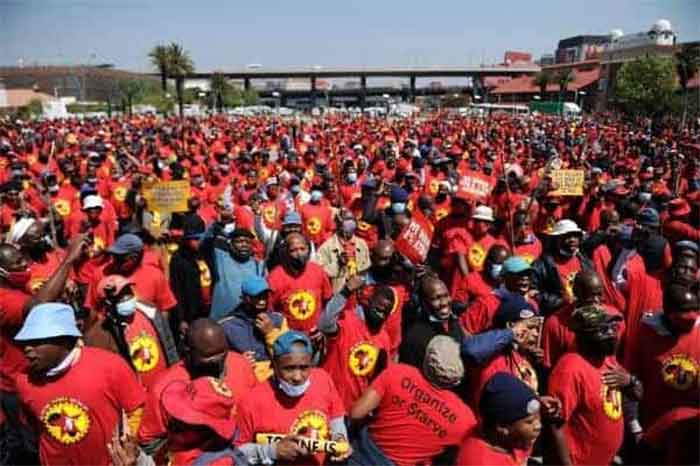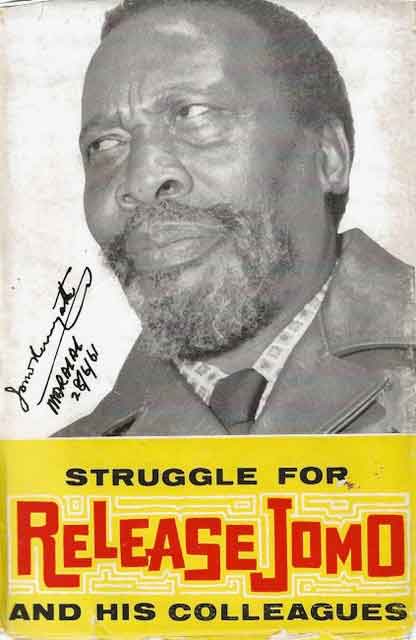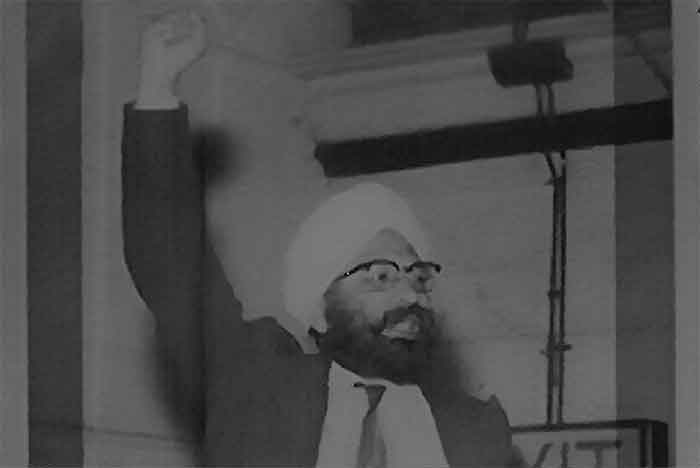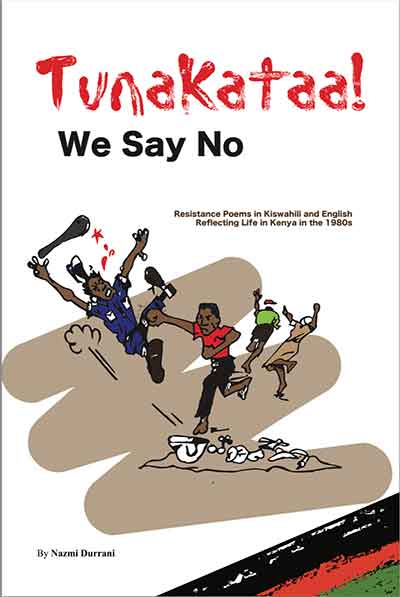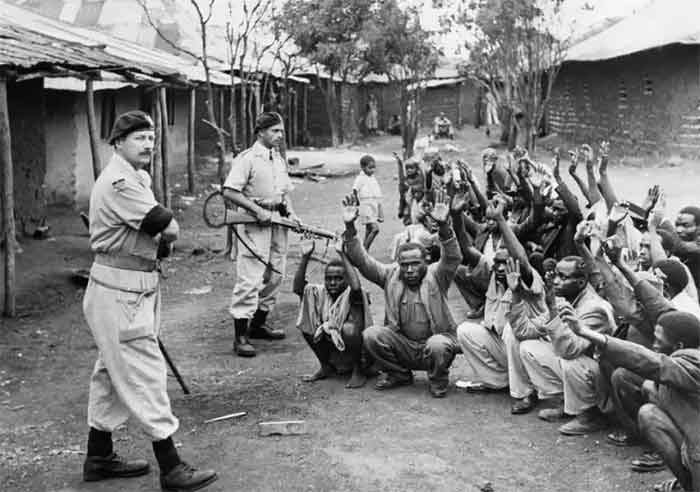
The official or ‘normal’ history of Kenya ignores or downplays resistance to capitalism and imperialism by the people of Kenya. Mostly ignored are organisations of those who opposed the rule by the comprador bourgeoisie. Some examples of such downplaying can be seen in many public sources. None of these, including most of the texts used for teaching in Kenya, pay attention to the resistance to capitalism and to the struggle for socialism waged by many organisations and their members. Also ignored are class and ideological struggles waged by those resisting capitalism and the rule of the comprador class.
In recent years, The Kenya Socialist, Communist Review and Vita Books have published a number of studies of Kenyan movements and personalities who have contributed to the struggle for liberation from colonialism and imperialism, both before and after independence. Many of these articles have challenged the traditional history of Kenya and added class and resistance dimensions which are missing from official history, as well as from history as taught in schools, colleges and universities in Kenya.
What may not be obvious at the first readings of such material are the sources used. Many of them are from the Kenya Resistance Archives (KRA), which consists of material from the underground resistance in Kenya, mostly from the 1980s to about the 1990s. Those movements, their ideology, leadership and activities do not feature in the mainstream history of Kenya. Their very existence is denied or passed over lightly.
The Kenya Resistance Archives and Library (KRAL) originated in the work of one of the cells of the underground December Twelve Movement (DTM) – the Kabete Cell, with its main sub-cells, Ngara and Nairobi. It thus does not include material collected by other DTM cells. Security consideration required minimum direct contact between the cells. The KRAL also does not include publications from before the formation of the Kabete Cell, around 1975. It is known, however, that some earlier material is available with some founder members of the DTM. Similarly, material on the DTM’s successor organisation MWAKENYA (MK) is available with its former officials; while much of the archives of UMOJA, which merged into MWAKENYA, was lost through administrative mishap, although some key documents are available in the KRA.
The Kenya Resistance Archives
The KRA is a unique collection brought together and looked after by political activists and independent institutions not funded or supported by public bodies. It is, indeed, part of resistance which it documents. No public library, archive or research institute in Kenya has collected, disseminated or archived the material that is available in the KRA. This is an aspect of the class struggle in Kenya, where the ruling class decides what is ‘history’, which it sees from its own class perspective, while working people record and disseminate their version of history in their own ways. The former is consolidated through government policies, education and the mass media, while the latter is allowed to gradually die. However, it is stored in people’s memory and disseminated through oral and alternative media.
It was the British government that destroyed the archives and libraries of Mau Mau before being forced to give independence to Kenya. The full story of the collection and the destruction of these records is available in various records. The comprador bourgeois government under Jomo Kenyatta and KANU, handed power by the departing colonial power, made sure that resistance and its documents were not allowed to see the light of day. President Daniel arap Moi then followed Kenyatta’s nyayos in repressing resistance and not allowing the documents to be collected. It is then remarkable that the KRA has been preserved, having survived journeys to and from London, and can be seen in Nairobi at the Ukombozi (‘Liberation’) Library today. The lesson from this experience is relevant to resistance organisations in Kenya and elsewhere, to ensure that their documents are well preserved, otherwise their history will not be recorded or survive.
The Kabete Cell
Many of the documents held by the Kabete Cell in 1984 had to be destroyed once one of its members was interrogated by the Special Branch of the Kenya Police. While it did not have all the underground publications of the DTM, the cell had some significant titles as well as many working papers and work in progress, together with the typewriter used for some underground publications, the DTM rubber stamp and other equipment. All this had to be destroyed. Yet some important material was saved and sent to London in 1978 by another member of the cell. In the late 1990s, this was then sent in small batches to MK-DTM in Nairobi. The material was passed on to Ukombozi Library once it was set up in 2017 by Vita Books, MK-DTM and the Mau Mau Research Centre.
The material included documents of the Kabete Cell and the main cells under it – the Nairobi Cell (based at the University of Nairobi, but including many worker and peasant members under its sub-cells) and the Ngara Cell, where the DTM’s main library was located. The Kabete Cell split into a number of semi-independent cells after the suspension of its leader by members around 1983-84, and material from these cells is not included in the KRA. However, Kabete cell members in London later re-established links with Upande Mwingine, formed from the earlier Ngara Cell. Some of its material was used for MWAKENYA publications, and these are also part of the KRA.
The Kabete Cell also had, as its library, many Marxist and progressive Kenyan titles, as well as books from socialist and revolutionary countries around the world. While the main DTM Library at the Ngara Cell included many more titles, this was also a substantial collection which could not be sent to London. Other cells, now independent of the Kabete cell, were reluctant to connect with it for security reasons, once one of its members had been identified as ‘an enemy agent’ by the Special Branch. It was therefore decided to pass on these key books to contacts at the University of Nairobi and among communities around Nairobi. A member of the Kabete Cell took great risks and deposited the books among those needing them. They were used and distributed among other cells and progressive individuals.
An important collection that the Kabete Cell had was the 36 carvings on Mau Mau by Wakamba carver activists. Photos of some of these accompanied an earlier CR article.3c The carvings were too heavy to be transported to London when the Kabete cell came under attack, nor was it possible to pass them onto other cells because of the security concerns already mentioned. A Kabete Cell member later contacted Willy Mutunga, a trusted member of DTM who, despite having been previously detained, was willing to support the cell by taking the carvings for safe keeping. A small number of the carvings were taken to London after Moi was no longer in power and it became possible for cell members to return to Kenya. The remaining carvings were distributed among various rural communities in Kenya as part of the people’s heritage.
An important DTM document that was saved and taken to London was Publishing, An Annotated Bibliography and Study Guide. It was an internal document to inform DTM publishing activities, and a copy is included in the KRA. Among the articles listed were:
- Marx, Debates on Freedom of the Press
- Engels, Marx and the Neue Rheinische Zeitung (1848-49)
- Lenin, Draft of a Declaration of the Editorial Board of Iskra and Zarya, Declaration of the Editorial Board of Iskra, The Character of Our Newspapers
- Stalin, articles for the Georgia revolutionary press 1901-1911
- Mao Zedong, Introducing ‘The Communist’, Introducing ‘The Chinese Worker’, Oppose Stereotyped Party Writing, Talks at the Yenan Forum on Literature and Art
- Stanley Harrison, Poor Mens’ Guardians: A record of the struggle for a democratic newspaper press, 1763-1973.
An interesting feature of the work of the Kabete Cell was that it contributed a large number of articles to local and international journals. Some of these were later published by Vita Books, Nairobi, in a number of books. These include Information and Liberation: Writings on the politics of information and librarianship (2008) by Shiraz Durrani. Some more articles written at a later period are to be included in a forthcoming book, Writings and Reflections on the Class Struggle in Kenya,1992-2022.
A decisive period for the Kabete Cell was an article by Shiraz Durrani on Pio Gama Pinto, published in theStandard in1984. Events after this led to the exile of the Kabete Cell to London (one of whose members and the leader having earlier been suspended). But the early drafts of the material on Pinto, as well as other manuscripts on Makhan Singh, Mau Mau and the history of publishing, were all written in Kenya prior to the exile in 1984. They would have been published in Kenya, but the intervention by the Special Branch interrupted this process. However they were all published later by Vita Books, initially based in London but moving to Nairobi in 2017.
The Nairobi Cell
Among the material saved from the work of the Nairobi Cell, now available in the KRA, are the proceedings of a number of workshops for working-class librarians at the University of Nairobi and other libraries in Nairobi. These were reproduced in the University of Nairobi Library Magazine, later renamed Sauti ya Wakutubi. Four issues of the magazine were printed and published at the Library.
The Nairobi Cell also created a Sehemu ya Utungaji – creative wing – for artwork and creative activities. It also co-produced the play, Kinjikitile, Maji Maji with Takhto Arts, a Nairobi play group. The play ran at the University of Nairobi Education theatre in 1984 and was directed by a member of the Kabete Cell. The KRA has full documentation, including photos, of the play.
The focus of material collected in the KRA moved to London where the former Kabete Cell members were active in UMOJA and MWAKENYA. The material they collected forms the rest of KRA. The histories of DTM, UMOJA and MWAKENYA have been documented in recent years or in forthcoming articles.
The Kenya Resistance Library (KRL)
The Kabete Cell was formed around 1977-78. It soon began to expand and formed other cells under it. The first one to be set up, around 1978, was the Ngara Cell, which in time became one of the most productive cells in the Kabete ‘cell family’. Its publications are held in London and will be moved to Ukombozi Library in due course.
Some details of the work of the Ngara Cell are mentioned in Liberating Minds, which “consists of biographies of progressive South Asian Kenyans written by Nazmi Durrani. Originally published in Gujarati in the 1980s, they are available here in English for the first time, together with the original Gujarati.” This was in the tradition of DTM activists to write on the history of their nationalities. The cell member also wrote resistance poems in Kiswahili and translated them into English, with accompanying drawings. The poems are to be published by Vita Books in 2023 under the title Tunakataa! We Say No! There are many unpublished works by the cell which are included in the KRA.
It is, however, the information and documentation work for which the Ngara Cell is better known. It produced a large number of regular publications which give a clear picture of the class struggle in Kenya. These are aspects that have been ignored by most historians and they indicate the political orientation of the DTM. The publications included:
• Article 5: a monthly journal inspired by Article 5 of the United Nations Declaration on Human Rights, which states that “No-one shall be subjected to torture or to cruel, inhuman or degrading treatment or punishment.” Article 5 collected newspaper cuttings highlighting the regime’s human rights abuses.
• Hali Ya Nchi (‘State of the Country’), a fortnightly summary of events in Kenya, highlighting repression by the regime, acts of resistance by Kenyans and important events on the economic, political and social fronts.
• Upande Mwingine (‘The Other Side’), a monthly summary of resistance to the regime by workers, peasants, students and generally by all democratic-minded Kenyans. It included strikes, demonstrations and other activities.
The Ngara Cell at this period took up different names on its publications, but is known generally as Upande Mwingine, and this is the name used here to distinguish its work from the earlier Ngara Cell. In the 1990s, the Kabete Cell members in London re-established links with Upande Mwingine and exchanged a large amount of information and activities.
Besides the publications mentioned above, Upande Mwingine started a photo-documentation work of the main resistance fighters against colonialism. It sent to London over a hundred photographs, with details of sources and brief histories. The plan was for Vita Books to publish these in the 1990s as a pictorial history of resistance in Kenya; but this was forestalled by the death of the key member of Upande Mwingine (as described in Liberating Minds). Since then, lack of resources and other difficulties have prevented publication. However, all the material, photos and notes are available in the KRA, currently in London to be transported to Ukombozi Library in due course.
The work of Upande Mwingine is acknowledged by MWAKENYA which used the research by the group for its 1987 publication, Kenya, Register of Resistance, 1986, which says:
“Upande Mwingine” – Register Of Resistance
We here present this analysis of the actions of the workers, peasants, students, small traders for the year 1986, to expose the lies of the Moi- KANU regime. The analysis is based on the very brilliant, meticulous monthly and annual documentation of the resistance deeds and actions of workers, peasants, and students etc in industry, commerce, plantations, schools and colleges, carried out by Upande Mwingine, the underground workers’ organ. Upande Mwingine has systematically compiled this Kiswahili register of strikes and demonstrations by the working people over a number of years. But we have chosen 1986 deliberately. 1986 saw the heightening of repression in Kenya under the guise of hunting for MWAKENYA cadres. The Register shows quite clearly that it is the mass movement of Kenyans that is basically frightening the regime. The regime fears that MWAKENYA will give the correct political direction to this mass unrest.”
All these documents, MWAKENYA’s Register of Resistance and many publications from Upande Mwingine are available at the Kenya Resistance Archives. The Archives are indeed an important resource of a period of resistance that would otherwise remain undocumented and hence unknown to future generations.
The Library
Besides all the above work, it is the Ngara Cell’s Library that remains a lasting legacy to the cell and the DTM. It was set up by teacher and librarian Nazmi Durrani, and contained over a thousand books, including complete sets of Selected Works of Marx, Lenin, Stalin and Mao. Such publications were banned in Kenya, and anyone found with them was likely to be detained. In addition, the Library included key works from resistance movements around the world. It was located in Nazmi’s house in the Ngara district of Nairobi, hence the name Ngara Cell. After Nazmi’s death in an accident in1990, the books were looked after by members of his family and later passed on to other members of the (reconstituted) Ngara Cell. It was in 2017 that the books were transferred to the Ukombozi Library on its foundation.
Vita Books and the Ukombozi Library are the two organisations that continue to support the DTM Library and archival legacy of the DTM, and move it forward to meet today’s needs. While the Archives and Library would not have survived without their support, their history remains outside the scope of this article. However, the following interviews and articles provide some background to their work and history:
- Shiraz Durrani and Kimani Waweru, interviewed by Stephanie Kitchen (2017), at https://www.readafricanbooks.com/publisher-profiles/shiraz-durrani-and-kimani-waweru/
- Shiraz Durrani and Kimani Waweru, Vita Books, The Home of Kenya Left and the Forgotten Radical Histories, at https://www.academia.edu/93677210/Vita_Books_The_Home_of_Kenya_Left_and_the_Forgotten_Radical_Histories
- Kimani Waweru and Loren Balhorn, Kenya’s First Socialist Library, at https://www.rosalux.de/en/news/id/41361/kenyasfirst-socialist-library/.
- Kimani Waweru, ‘Ukombozi Library’, in The Kenya Socialist, No 5, 2022, pp 31-2.
A previous article in this journal also gave a brief introduction to the Ukombozi Library.
Conclusion
While a number of public institutes, libraries and archives in Kenya have important documents on the country’s history, none, as far as can be ascertained, holds material like that contained in the Kenya Resistance Archives. This is a reflection of the ongoing class struggle in Kenya, where the ruling class controls what information and documents should and could be collected by public institutions. It is possible that foreign libraries such as the Library of Congress and the British Council Library hold such material. If so, they are not shared with Kenyan public. This points to the importance of KRA as perhaps the only publicly available record of resistance material in Kenya.
Shiraz Durrani is a Kenyan political exile living in London. He has worked at the University of Nairobi as well as various public libraries in Britain where he also lectured at the London Metropolitan University. Shiraz has written many articles and addressed conferences on aspects of Kenyan history and on politics of information in the context of colonialism and imperialism. His books include Kenya’s War of Independence: Mau Mau and its Legacy of Resistance to Colonialism and Imperialism, 1948-1990 (2018, Vita Books). He has also edited Makhan Singh – A Revolutionary Kenyan Trade Unionist (2017, Vita Books) and Pio Gama Pinto: Kenya’s Unsung Martyr,1927 – 1965 (2018, Vita Books). He is a co-editor of The Kenya Socialist. and edited Essays on Pan-Africanism (2022, Vita Books, Nairobi). His latest book (2023) is Two Paths Ahead: The Ideological Struggle between Capitalism and Socialism in Kenya, 1960-1990. Some of his articles are available at https://independent.academia.edu/DurraniShiraz and books at: https://www.africanbookscollective.com/search-results?form.keywords=vita+books
Published in Communist Review 108. Summer 2023, pp 28-31

